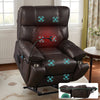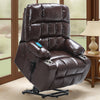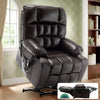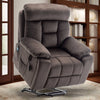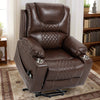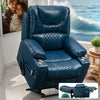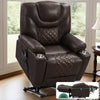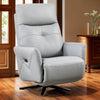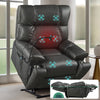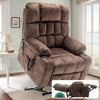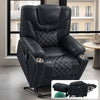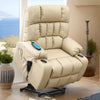Understanding the Eligibility for Lift Recliners
Key Criteria for Lift Recliner Benefits
Medicare considers several key criteria for providing benefits for lift recliners. To qualify, a patient must have severe arthritis or a severe neuromuscular disease. Also, the patient must be unable to stand up from a regular chair in their home. The use of a lift recliner must be part of their treatment plan and prescribed by a doctor. Moreover, patients must be able to operate the chair independently, or have someone who can assist them. It's crucial for individuals to meet these conditions to get Medicare support for a lift recliner.

The Importance of Evaluation for Lift Recliner Services
To secure Medicare coverage for a lift recliner, a thorough evaluation is vital. This key step ensures the chair meets your specific needs. An assessment by a healthcare professional is a must. During this exam, they will determine if a recliner is necessary for your health. Your mobility issues and daily living activities will be looked at. The goal is to show how a power recliner can improve your quality of life. Make sure all Medicare forms include this professional opinion. This makes the claim process smoother. Remember to keep a copy of the evaluation for your records.
Navigating Medicare Policies for Lift Recliners
Guidelines for Medicare Reimbursement
For those seeking a big and tall power recliner, understanding Medicare's guidelines for reimbursement is critical. Medicare Part B may cover the cost if the recliner is deemed medically necessary. This typically involves a doctor's prescription. The chair must be classified as durable medical equipment (DME). Patients need to acquire the recliner from a Medicare-approved supplier for coverage. It's essential to note that only the lift mechanism may be covered, not the entire chair. Patients will be responsible for 20% of the Medicare-approved amount, and the Part B deductible applies.
How Lift Recliners are Categorized Under Medicare
Lift recliners are seen as durable medical equipment (DME) by Medicare. This group covers items built for medical use at home. Covered chairs must assist with sitting and standing. To get this aid, a doctor's approval is needed. It supports those who can't stand up from a regular chair. Chairs with luxury features are not covered. Only the lift mechanism gets support.
Best Practices for Providers and Patients
Ensuring Compliance in Lift Recliner Prescriptions
Healthcare providers must ensure prescriptions are compliant. They need to meet strict criteria for Medicare coverage. This includes confirming patient eligibility and lift recliner needs. Providers should document all necessary details clearly. They must also use the right Medicare codes. Regular training on policy changes is crucial. This keeps the process smooth for patients. Adhering to these steps will maximize the chances of Medicare payment.
Tips for Patients to Leverage Medicare for Lift Recliners
Navigating Medicare for lift recliners can be tricky. Here are tips to help:
- Understand Your Coverage: Start by reading your Medicare plan details. Look for coverage on durable medical equipment (DME).
- Get a Prescription: Your doctor must prescribe the recliner for a specific medical reason. Ensure that the prescription includes all necessary details.
- Choose the Right Supplier: Use a Medicare-approved supplier to ensure coverage. Ask suppliers if they accept Medicare.
- Keeping Proper Documentation: Keep all records of your doctor's orders and purchase receipts. You may need to submit these with your claim.
- Be Aware of Costs: Know that you might have to pay 20% of the cost, and the Part B deductible applies.
- Follow Up: Always check the status of your claim. If denied, you can appeal.
- Seek Assistance: If you're unsure, contact a Medicare counselor for help with the process.








